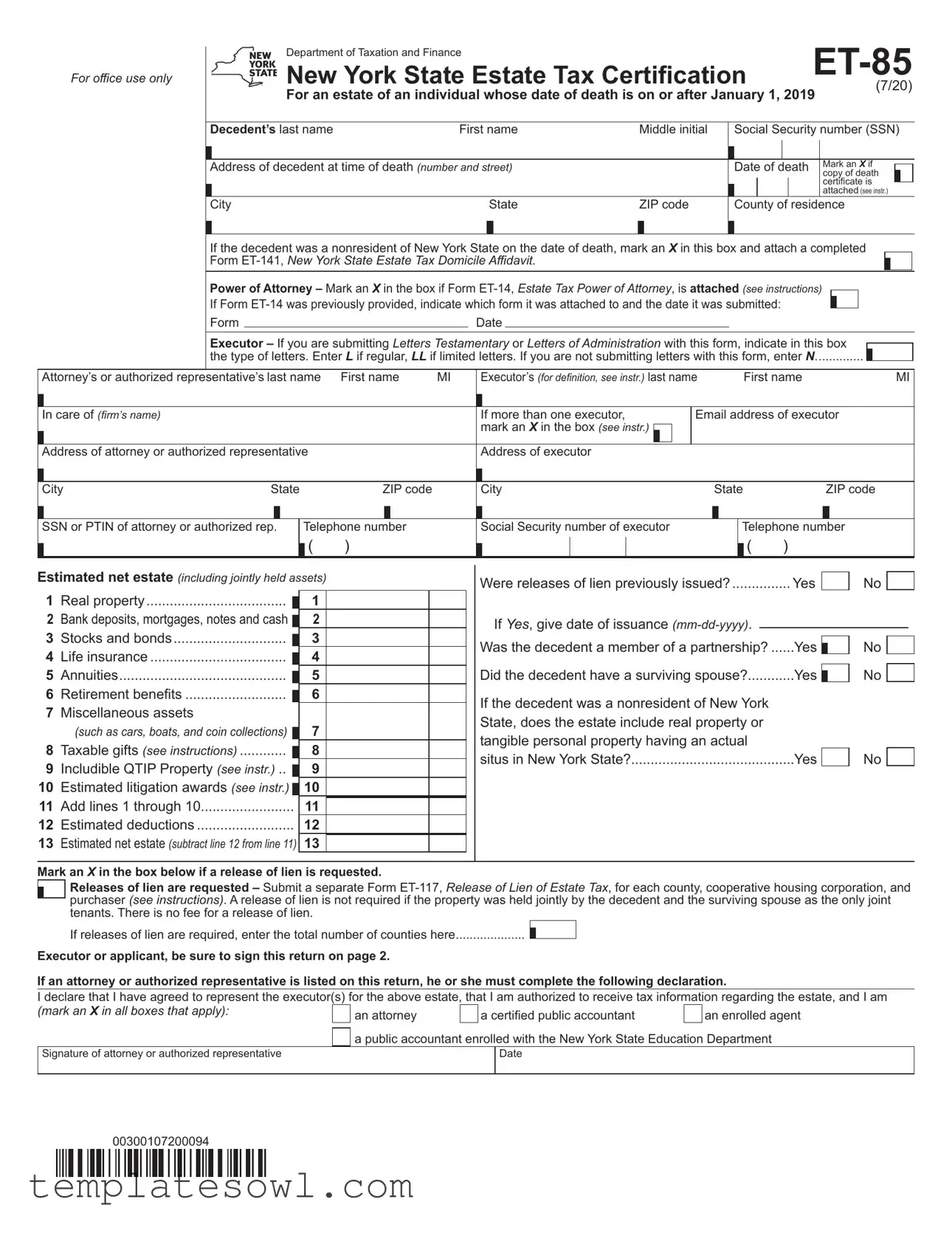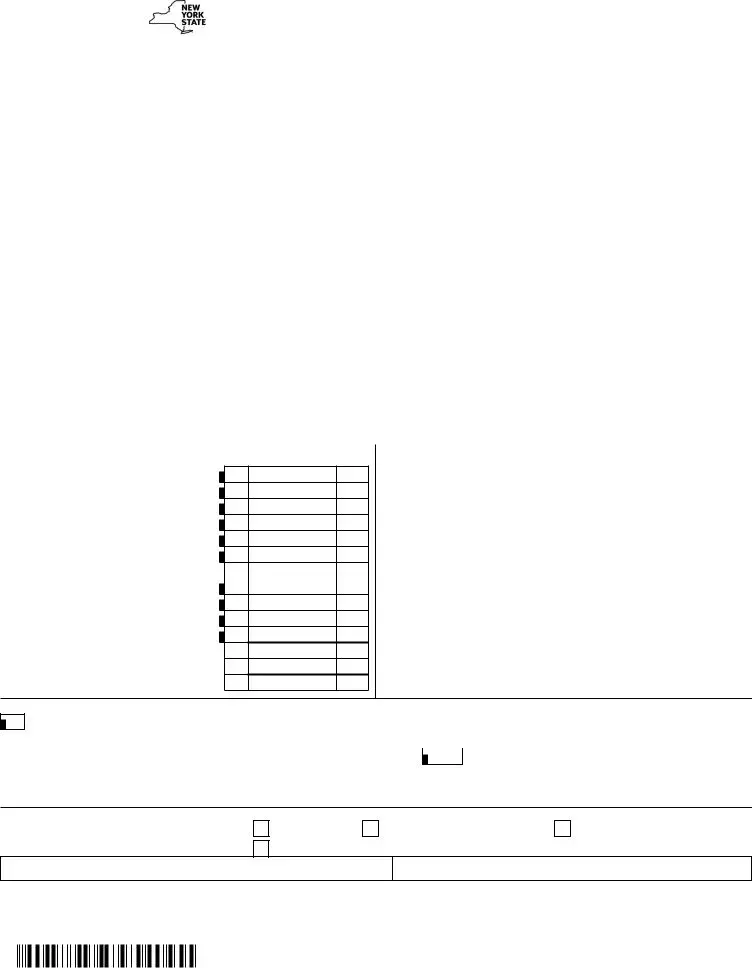What is the purpose of the ET-85 form?
The ET-85 form is used to certify estate tax matters in New York State. Specifically, it's for the estate of an individual who passed away on or after January 1, 2019. This form is necessary for releasing any estate tax lien on the decedent's assets, allowing for easier transfer or sale of property without the encumbrance of outstanding taxes.
Who needs to fill out the ET-85 form?
The executor or administrator of the estate, or a beneficiary with an interest in the estate needs to fill out the ET-85 form. If there is no appointed executor, anyone with standing to the estate can also complete the form. It’s essential that they have a thorough understanding of the decedent's assets and affairs to ensure the accuracy of the information provided.
What information must be included on the ET-85 form?
Key details required include the decedent’s full name, Social Security number, address at the time of death, date of death, and proof of a death certificate. The executor's contact details, including name, address, and any attorneys or representatives must also be provided. Furthermore, details about the assets of the estate and whether the decedent had a surviving spouse are necessary for the form’s completion.
What if the decedent was a nonresident of New York State?
If the decedent was not a resident of New York State at the time of their passing, the form requires marking the appropriate box. It is imperative to attach the completed Form ET-141, the New York State Estate Tax Domicile Affidavit, which determines the decedent’s domicile status. This step is crucial as it affects the estate tax obligations.
How does one request a release of lien using the ET-85 form?
To request a release of lien, the executor must mark the corresponding box on the ET-85 form. If a release is required, it is important to submit a separate Form ET-117 for each relevant county or property. A release is straightforward but essential to ensure that no pending estate tax liens affect the transfer of property.
Is there any cost associated with submitting the ET-85 form?
There is no fee for filing the ET-85 form itself. Additionally, if a release of lien is requested, there is also no charge for that process, which can significantly ease the burden during estate administration. This financial aspect allows executors to focus on fulfilling their responsibilities without incurring additional costs.
What happens if all required information is not included on the ET-85 form?
Failing to provide complete and accurate information may lead to delays in processing the form. Incomplete submissions can result in requests for additional information or even denials, which could prevent the release of liens. Ensuring thoroughness during the initial submission can save time and potential frustration.
Can the ET-85 form be submitted electronically?
No, the ET-85 form must be mailed to the New York State Estate Tax Processing Center. While some forms might allow for electronic submission, the ET-85 requires traditional mail to ensure all signatures and necessary documents accompany the submission. It's advisable to use a reliable mailing method to ensure timely delivery.
How long does it take to process the ET-85 form?
The time frame for processing the ET-85 form may vary based on the volume of submissions the New York State Department of Taxation and Finance receives. Generally, you can expect processing to take several weeks. Patience is key, but if there are concerns about status, contacting the department is encouraged to check on the progress.


